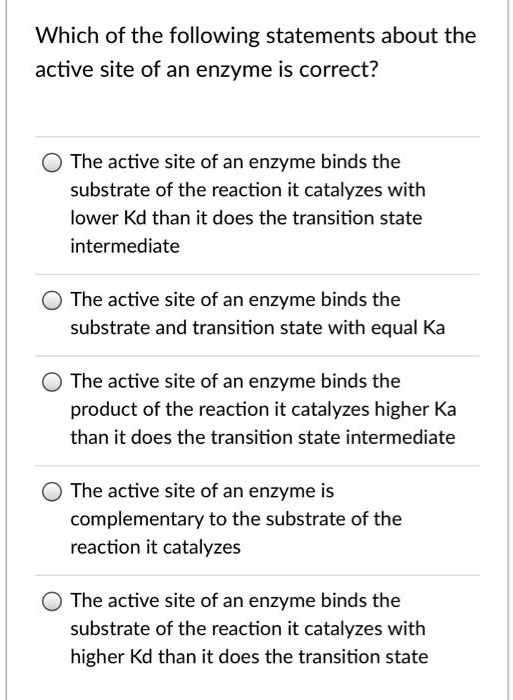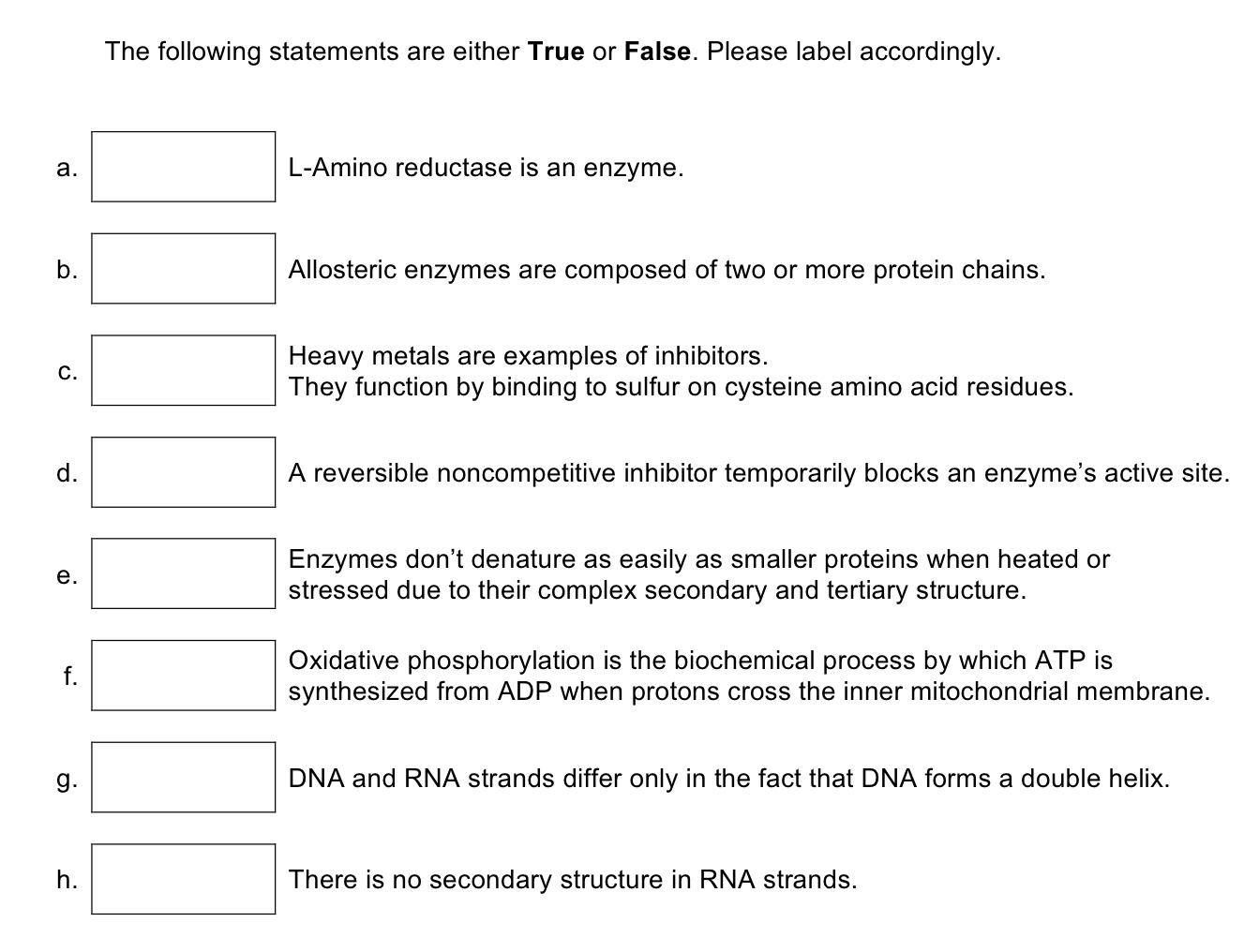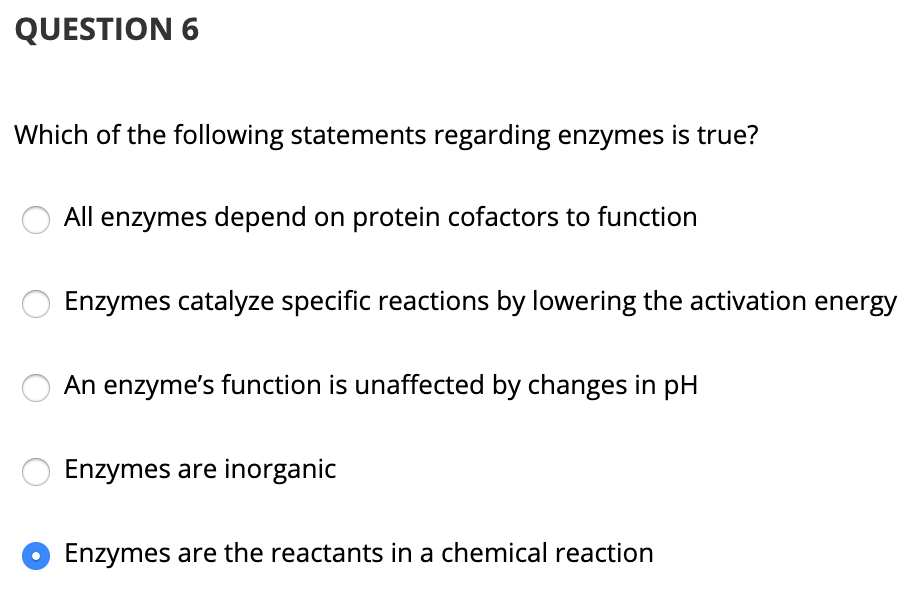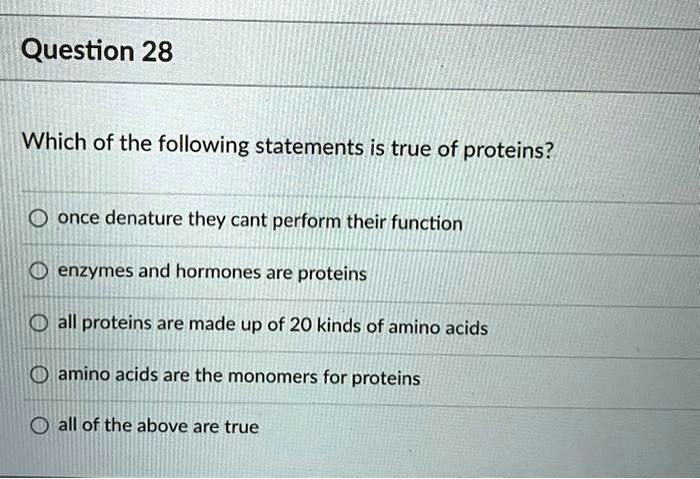Which Of The Following Statements About Enzyme Function Is True

Imagine a bustling kitchen, filled with the aroma of simmering spices and the rhythmic chop-chop-chop of a chef preparing a gourmet meal. Invisible to the naked eye, but absolutely crucial to the transformation of raw ingredients into culinary masterpieces, are enzymes – the unsung heroes of the biological world. Like tiny, incredibly precise chefs, they speed up reactions, ensuring that everything happens at just the right pace and in the right way.
At the heart of understanding life itself lies a fundamental concept: how enzymes function. The correct answer to the question "Which of the following statements about enzyme function is true?" reveals a powerful insight into the delicate dance of biochemistry that sustains us. Understanding this central idea opens doors to advancements in medicine, biotechnology, and even everyday applications like food production.
Enzymes: The Catalysts of Life
Enzymes are biological catalysts, primarily proteins, that accelerate chemical reactions within cells. Without enzymes, many of these reactions would occur too slowly to sustain life. They are highly specific, meaning each enzyme typically catalyzes a single type of reaction or acts on a specific molecule, known as its substrate.
The Lock-and-Key and Induced Fit Models
One of the earliest models proposed to explain enzyme specificity was the lock-and-key model. This model suggests that an enzyme's active site, the region where the substrate binds, has a shape perfectly complementary to the shape of the substrate, much like a lock and its key.
However, the induced fit model provides a more refined understanding. This model proposes that the active site of the enzyme is not a rigid structure but rather a flexible one.
Upon binding of the substrate, the enzyme undergoes a conformational change, adjusting its shape to snugly fit the substrate. This interaction stabilizes the transition state, lowering the activation energy and accelerating the reaction.
Lowering the Activation Energy
The primary function of an enzyme is to lower the activation energy of a reaction. Activation energy is the energy required to initiate a chemical reaction.
By providing an alternative reaction pathway with a lower activation energy, enzymes drastically increase the rate at which reactions occur. This is crucial for all biochemical processes, from digestion to DNA replication.
Enzyme Specificity: A Precise Fit
Enzymes are renowned for their remarkable specificity. Each enzyme typically binds to only one or a few closely related substrates.
This specificity arises from the unique three-dimensional structure of the enzyme's active site, which allows it to interact with only those molecules that have a complementary shape and chemical properties.
Factors Affecting Enzyme Activity
Several factors can influence enzyme activity, including temperature, pH, substrate concentration, and the presence of inhibitors or activators. Temperature plays a crucial role, as enzymes have an optimal temperature range in which they function most efficiently.
Similarly, pH affects the ionization state of amino acid residues in the active site, impacting substrate binding and catalysis. Deviations from the optimal pH can disrupt enzyme structure and activity.
Substrate concentration also impacts enzyme activity. As substrate concentration increases, the rate of the reaction typically increases until all enzyme active sites are saturated.
Enzyme inhibitors can decrease enzyme activity, while activators can increase it. These regulatory molecules play important roles in controlling metabolic pathways.
Enzyme Regulation: Maintaining Balance
Enzyme activity is tightly regulated to maintain cellular homeostasis. Cells employ various mechanisms to control enzyme activity, including feedback inhibition, allosteric regulation, and covalent modification.
Feedback inhibition is a common regulatory mechanism in which the end product of a metabolic pathway inhibits an enzyme earlier in the pathway, preventing overproduction of the product. Allosteric regulation involves the binding of a regulatory molecule to a site on the enzyme distinct from the active site, altering the enzyme's conformation and activity.
Covalent modification, such as phosphorylation, can also modulate enzyme activity. These regulatory mechanisms allow cells to fine-tune enzyme activity in response to changing conditions.
The Answer: Decoding Enzyme Function
Given the principles we’ve explored, the true statement about enzyme function is: "Enzymes lower the activation energy of a reaction." This accurately captures the fundamental role of enzymes in accelerating biochemical reactions.
Let's examine why other potential options are not correct. Enzymes themselves are not consumed in the reaction; they are catalysts and are regenerated. While enzymes bind substrates, they don’t always bind to multiple substrates simultaneously - many enzymes work with single substrates.
Finally, while enzymes are sensitive to environmental conditions, they don't necessarily function optimally under extreme conditions; rather, they have specific optimal ranges for temperature and pH. Therefore, the only universally true statement is that enzymes lower activation energy.
Enzymes in Action: Real-World Applications
The understanding of enzyme function has profound implications across various fields. In medicine, enzymes are used in diagnostic tests and therapies.
For example, enzyme-linked immunosorbent assays (ELISAs) are widely used to detect and quantify specific proteins or antibodies in biological samples. Enzymes are also employed as therapeutic agents, such as thrombolytic enzymes used to dissolve blood clots.
In the food industry, enzymes are used to improve food processing, enhance flavor, and extend shelf life. Amylases are used in baking to break down starch into sugars, while proteases are used to tenderize meat.
In biotechnology, enzymes are essential tools for DNA manipulation, protein engineering, and biofuel production. Restriction enzymes are used to cut DNA at specific sequences, allowing scientists to create recombinant DNA molecules.
A Concluding Thought: The Elegance of Enzyme Action
Enzymes are more than just biochemical catalysts; they are intricate molecular machines that orchestrate the symphony of life. Their precise specificity, remarkable efficiency, and elegant regulation highlight the beauty and complexity of the biological world.
By understanding how enzymes function, we gain a deeper appreciation for the intricate processes that sustain us and unlock new possibilities for advancing medicine, biotechnology, and beyond. The quest to understand these tiny, powerful "chefs" continues to drive scientific innovation and improve the quality of life.
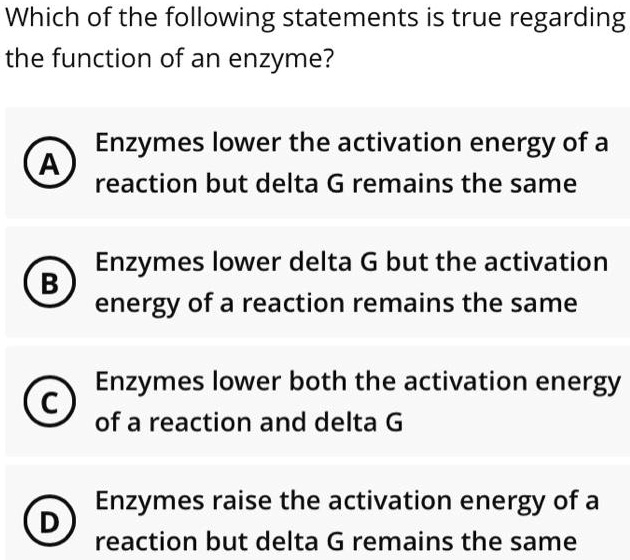

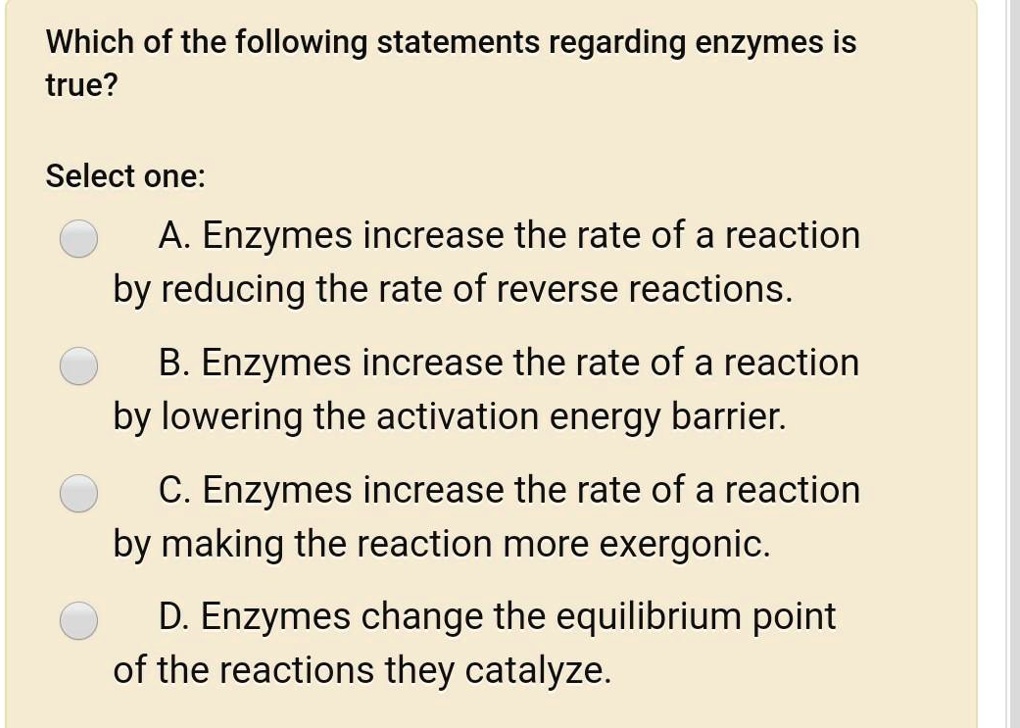
![Which Of The Following Statements About Enzyme Function Is True [ANSWERED] ch of the following statements regarding enzymes is true](https://media.kunduz.com/media/sug-question-candidate/20230211011324914997-4469266.jpg?h=512)



